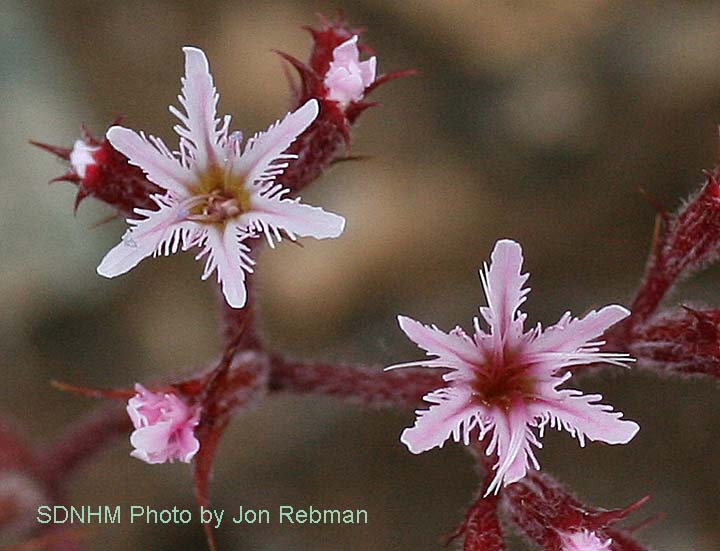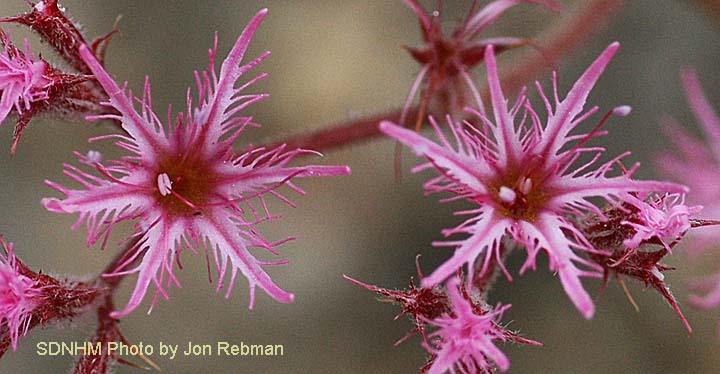Observations of the Month: Spineflowers (Chorizanthe fimbriata) Polygonaceae
Fringed Spineflower (Chorizanthe fimbriata var. fimbriata) https://www.inaturalist.org/observations/25251712 by @smfang
Laciniate Spineflower (Chorizanthe fimbriata var. laciniata) https://www.inaturalist.org/observations/32182202 by @sheriff_woody_pct
San Diego County has almost a dozen species of spineflowers in the genus Chorizanthe. One of the most common species is Chorizanthe fimbriata, which occurs from the coast to the desert transition in two varieties: C. f. var. fimbriata and C. f. var. laciniata. Along the immediate coast, Fringed Spineflower (var. fimbriata) is the expected taxon. In the desert transition, Laciniate Spineflower (var. laciniata) is expected. From the higher elevation inland foothills to the high mountains, either can be found, although var. fimbriata is more common and widespread than var. laciniata as demonstrated by the relative numbers of voucher specimens and iNaturalist observations from San Diego County (303 voucher specimens and iNat observations verified by Jon Rebman of var. fimbriata compared to 137 voucher specimens and verified iNat observations of var. laciniata).
As the species name suggests, both varieties have fringes, but a close look at the tepals (the "perianth") of Chorizanthe fimbriata will help you determine which variety it is.


(L) Chorizanthe fimbriata var.fimbriata; (R) Chorizanthe fimbriata var. laciniata
Photos copyright San Diego Natural History Museum
The terminal segment of the perianth lobes of var. fimbriata (photo on left above) may be either linear or lanceolate, but will be wider than the lateral lobes/fringes. The terminal segment of the lobes of var. laciniata (photo on right above) is linear and just barely wider than the lateral fringes. The flowers of var. laciniata may be slightly larger overall than var. fimbriata. Laciniate means "deep, narrow, irregular segments" which tells you to look for skinny tips and almost equally skinny lateral fringes on var. laciniata. (Occasionally you may come across an intermediate plant which does not display distinct characteristics of only one variety.)
If you post an observation of a spineflower with only distant or blurry photos, it may be impossible to tell which taxon is represented. All of us who are members of the San Diego Plant Atlas Project on iNat are fortunate that our San Diego plant observations are reviewed by Jon Rebman, curator of botany at the San Diego Natural History Museum, and identified by him, if the required features are visible in the photos posted. At the San Diego Plant Atlas website, you will find Guidelines for Photographing Plants for iNaturalist and a wealth of information about San Diego plants, including photos of many, such as the ones embedded above.




























